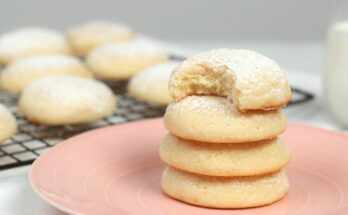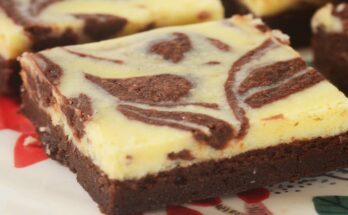White Queso Recipe: White queso, also known as “queso blanco,” is the creamy, cheesy dip that’s a staple at Tex-Mex restaurants. It’s smooth, rich, and slightly tangy, often made from a blend of white cheeses, milk or cream, and a few flavorful ingredients like green chiles or jalapeños. Unlike its yellow counterpart, white queso is typically made without processed cheese and leans on white American or Monterey Jack for that silky texture and melt-in-your-mouth feel.
Whether you’re throwing a party, planning a movie night, or just in the mood to dip something delicious, this white queso recipe is the one you’ll come back to again and again. It’s simple to whip up and tastes like something straight from your favorite Mexican restaurant.
Why You’ll Love This Recipe
This white queso recipe checks every box. It’s creamy without being too thick, melts perfectly over nachos, and pairs beautifully with everything from chips to tacos. One of the best things? It’s super customizable. Want it spicier? Add more jalapeños. Want it richer? Swap milk with heavy cream. It’s also a one-pot wonder, so you’re not left with a sink full of dishes.
Here’s why it might become your new go-to dip:
- Ready in 15 minutes.
- Uses real, easy-to-find ingredients.
- Can be made ahead and reheated.
- Versatile enough to pair with nearly any Tex-Mex dish.
Let’s dive into the magic of melty cheese, shall we?
Ingredients for White Queso
Must-Have Ingredients
To make a restaurant-style white queso at home, you only need a few essential ingredients. These combine to create that creamy, luxurious texture and bold flavor.
Here’s what you’ll need:
- White American cheese – This is the key to that classic white queso consistency. Get it from the deli counter if possible, as it melts more smoothly than pre-packaged slices.
- Whole milk – Helps thin the cheese and adds a creamy base.
- Butter – Adds richness and helps sauté the aromatics.
- Jalapeños or green chiles – For a touch of heat and flavor. You can adjust the amount to your liking.
- Garlic (minced) – Adds a deeper savory note.
- Onion (finely chopped) – Builds a flavor foundation.
- Salt and pepper – To balance everything out.
Each of these ingredients has a purpose, and when they come together, the result is magic in a bowl.
Optional Add-ins for Flavor Variations
One of the best things about queso is how customizable it is. Depending on your taste or what you’ve got in the fridge, here are some tasty extras to consider:
- Diced tomatoes or Rotel – Add a pop of acidity and sweetness.
- Cream cheese – Makes it extra creamy and thick.
- Heavy cream instead of milk – For a richer texture.
- Hot sauce – If you’re feeling bold.
- Ground beef or chorizo – For a heartier dip.
These ingredients aren’t necessary for a basic queso, but they can help tailor the recipe to your exact flavor profile.
Step-by-Step Guide to Making White Queso
Step 1: Prep Your Ingredients
Before you even turn on the stove, take five minutes to prep everything. Chop the onions, mince the garlic, slice the jalapeños (remove seeds if you don’t want it too hot), and cube your cheese for easier melting.
Pro Tip: Don’t skip chopping your cheese into small cubes or thin strips. Large chunks won’t melt as evenly, and you risk a lumpy queso.
Also, set out your milk and any extras you plan to add in. Having everything ready before cooking will make the whole process smooth and stress-free.
Step 2: Cook the Aromatics
In a medium saucepan over medium heat, melt your butter. Once it’s bubbling slightly, toss in the diced onions and jalapeños. Cook them for 2-3 minutes until soft and fragrant, stirring occasionally so they don’t burn. Add the garlic during the last minute—garlic cooks fast and can become bitter if overdone.
This step is all about building a flavor base. You’re infusing your butter with spicy, aromatic goodness that will carry through the entire queso.
Step 3: Add Dairy and Melt Cheese
Now comes the fun part—melting the cheese! Pour in your milk slowly while stirring, and bring the heat down to low. Once the milk is warm, begin adding your cheese in batches, stirring constantly until it melts into a smooth sauce.
Be patient here—adding too much cheese at once can lead to clumping. Go slow, and keep that spoon moving.
If you’re using cream cheese or any other add-ins, now’s the time to stir them in as well.
Step 4: Blend for Smooth Texture
At this stage, your queso should be coming together nicely, but if you’re going for that ultra-smooth, restaurant-quality texture, here’s a trick: use an immersion blender. This step is optional but highly recommended if you’ve got bits of onion or pepper that didn’t fully soften or melt into the cheese.
Carefully blend the queso in the pot for a few seconds until it reaches your desired consistency. It’ll become velvety smooth, almost like a cheese fondue. If you don’t have an immersion blender, you can transfer it to a traditional blender, but be cautious with the heat—blend in small batches and leave space for steam to escape.
Don’t worry if it looks a little thin right now; queso thickens as it cools, so keep that in mind before adding more cheese or reducing it too much.
Step 5: Taste and Adjust Seasonings
Once your queso is smooth and hot, it’s time to taste and tweak. Start with the basics:
- Salt – Add a pinch at a time.
- Pepper – Freshly cracked black pepper brings depth.
- Spice – Want more heat? Add a splash of hot sauce or finely minced jalapeños.
At this point, feel free to stir in extras like cooked ground chorizo, cilantro, or diced tomatoes for an extra pop of flavor and texture.
Once you’ve fine-tuned the flavor, reduce the heat to the lowest setting just to keep it warm for serving.
Tips for the Perfect White Queso
Choosing the Right Cheese
Not all cheese melts the same way. That’s why white American cheese is a favorite for queso—it melts beautifully without turning grainy. You can usually find it at the deli counter, and it’s worth the extra step to ask for a thick slice or block you can cube at home.
If you can’t get white American cheese, your next best options include:
- Monterey Jack
- Pepper Jack (for heat)
- Mozzarella (for stretchiness, not much flavor)
- Queso blanco or Oaxaca cheese (for authenticity)
Avoid using pre-shredded cheeses; they’re coated with anti-caking agents that can affect melting.
Preventing Clumps or Separation
There’s nothing worse than broken, oily queso. Here’s how to avoid that kitchen tragedy:
- Low and slow is the way to go. Don’t crank up the heat.
- Always stir continuously when adding cheese to hot liquid.
- Add cheese in small batches, allowing each portion to melt before adding more.
- If your queso separates, try whisking in a splash of milk or using an immersion blender to bring it back together.
Queso is a bit of a science, but once you get the hang of it, you’ll be churning out restaurant-quality dips like a pro.
Serving Suggestions
Best Dippers for White Queso
White queso is the ultimate party dip, and what you dip into it matters. Here are some of the best pairings:
- Tortilla chips – The classic combo, especially sturdy restaurant-style chips.
- Pretzels – Soft pretzels dipped in hot queso are a match made in heaven.
- Veggies – Bell peppers, carrots, and celery add crunch and freshness.
- Breadsticks or pita – If you’re going for a fusion vibe.
You can also drizzle queso over:
- Nachos
- Tacos
- Baked potatoes
- Burgers
- Grilled chicken
The possibilities are seriously endless.
How to Keep Queso Warm
Queso is best served warm and gooey. Here are a few easy ways to keep it that way:
- Mini slow cooker or fondue pot – Great for parties.
- Double boiler setup – Prevents direct heat and scorching.
- Thermal serving bowls – For short-term warmth.
If it thickens while sitting out, stir in a tablespoon or two of milk and give it a gentle stir to loosen it up.
Storing and Reheating Leftover Queso
Proper Storage Methods
Have leftovers? Lucky you. Store queso in an airtight container in the fridge for up to 3–4 days. Make sure it’s cooled to room temp before sealing it up to prevent condensation (which can make it watery later).
Avoid freezing—it can separate and lose its creamy texture when thawed.
Reheating Without Losing Texture
To reheat queso:
- Microwave method: Heat in short bursts (30 seconds), stirring between each until warmed through.
- Stovetop method: Warm over low heat, stirring constantly. Add a splash of milk if it’s too thick.
Don’t let it boil—heat gently to keep that smooth, dreamy texture intact.
FAQs about White Queso Recipe
1. What is white queso made of?
White queso is typically made from white American cheese or a blend of cheeses like Monterey Jack and mozzarella. It’s melted with milk or cream and often seasoned with green chilies, garlic, and spices for flavor.
2. Can I use regular cheddar instead of white cheese?
While you can use cheddar, it won’t give you the same creamy texture and signature white color. White American cheese is preferred for authentic taste and smooth melt.
3. How do I keep white queso from hardening?
Keep it warm in a slow cooker or over low heat. Adding a bit of milk or evaporated milk while reheating helps maintain the creamy consistency.
4. Is white queso spicy?
Not necessarily. The spiciness depends on the ingredients. You can keep it mild or add jalapeños, green chilies, or hot sauce for more heat.
5. Can I make white queso ahead of time?
Yes! You can prepare it in advance and reheat gently on the stove or in a microwave. Just add a splash of milk when reheating to restore its creamy texture.
6. What can I serve with white queso?
It’s perfect with tortilla chips, nachos, soft pretzels, or as a topping for tacos, burritos, and baked potatoes.
7. Can I make it dairy-free or vegan?
Absolutely. Use plant-based cheeses and non-dairy milk like almond or oat milk. Nutritional yeast can also add a cheesy flavor in vegan versions.
8. How long does white queso last in the fridge?
Stored in an airtight container, it lasts about 3–4 days. Reheat with milk to regain creaminess.
9. Can I freeze white queso?
Freezing is not ideal as it may change the texture. It’s best enjoyed fresh or refrigerated for a few days.
10. What’s the difference between white queso and yellow queso?
The main difference is the cheese used. White queso uses white cheeses like white American or Monterey Jack, while yellow queso typically includes cheddar or yellow American cheese. The flavors and color differ slightly.
Conclusion
White queso isn’t just a dip—it’s a way of life. It’s rich, creamy, spicy, and packed with flavor. Whether you’re throwing a party, having taco night, or just want something delicious to dip your chips into, this easy step-by-step guide has got you covered.
Once you master the base recipe, it’s easy to customize it to your exact preferences. Throw in some jalapeños, stir in cooked chorizo, or drizzle it on nachos—there’s no wrong way to enjoy white queso. Just remember to keep it low and slow, use quality cheese, and always taste as you go.
So go ahead—get your chips ready, because this homemade white queso is going to steal the show.



